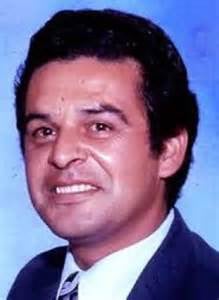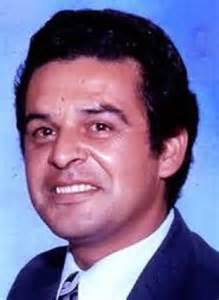The History of Red Ribbon Week

In 1977, after three years in Calexico, he was reassigned to the Fresno District Office in Northern California. Four years later, Kiki received transfer orders to Mexico, where he would work out of the Guadalajara Resident Office. For more than four years in Mexico, Kiki remained on the trail of the country's biggest marijuana and cocaine traffickers. In early 1985, he was extremely close to unlocking a multi-billion dollar drug pipeline. However, before he was able to expose the drug trafficking operations to the public, he was kidnapped on February 7, 1985. On that fateful day, while headed to a luncheon with his wife, Mika, Kiki was surrounded by five armed men who threw him into a car and sped away. That was the last time anyone but his kidnappers would see him alive.
It is believed that Special Agent Camarena's death actually occurred two days later, but his body was not discovered until March 5, 1985. He was 37 years old and was survived by his wife Mika and their three children—Enrique, Daniel, and Erik. During his 11 years with DEA, Kiki received two Sustained Superior Performance Awards, a Special Achievement Award and, posthumously, the Administrator’s Award of Honor, the highest award granted by DEA.
Shortly after Kiki's death, Congressman Duncan Hunter and high school friend Henry Lozano launched Camarena Clubs in Kiki's hometown of Calexico, California. Hundreds of club members including Calexico High School teacher David Dhillon wore red ribbons and pledged to lead drug-free lives to honor the sacrifices made by Kiki Camarena and others on behalf of all Americans.
Red Ribbon Week eventually gained momentum throughout California and later across the United States. In 1985, club members presented the "Camarena Club Proclamation" to then First Lady Nancy Reagan, bringing it national attention. Later that summer, parent groups in California, Illinois, and Virginia began promoting the wearing of red ribbons nationwide during late October.
The campaign was then formalized in 1988 by the National Family Partnership, with President and Mrs. Reagan serving as honorary chairpersons. Today, the eight-day celebration is an annual catalyst to show intolerance for drugs in our schools, workplaces, and communities. Each year, on October 23-31, more than 80 million young people and adults show their commitment to a healthy, drug-free lifestyle by wearing or displaying the red ribbon.
The Drug Enforcement Administration held its annual National Red Ribbon Rally virtually last year. Premiering on October 1st and be available to share throughout the month. Last year’s Red Ribbon Rally featured voices from our community and special guests who represent diverse experiences and perspectives on drug prevention and Red Ribbon activism, including youth performances that celebrate living drug-free. In addition, we recognized the elementary, middle, and high school winners of the DEA Red Ribbon visual arts contest, and announce the community groups selected to receive DEA’s 2020 Community Drug Prevention Award.



